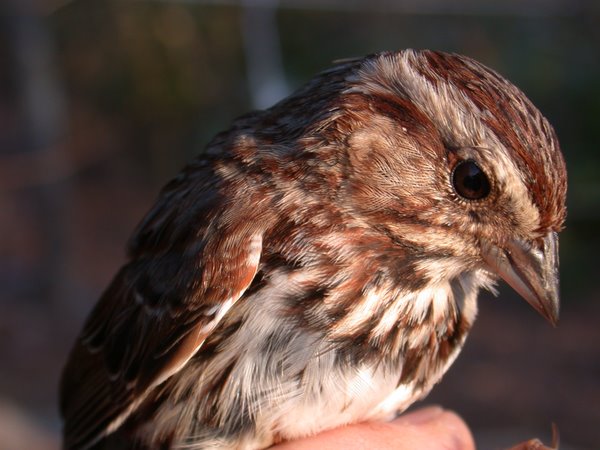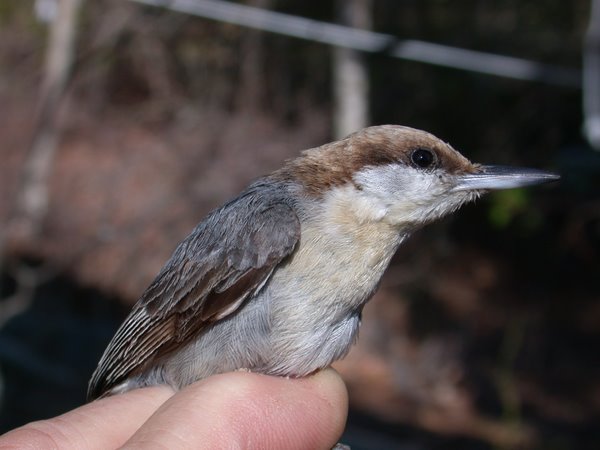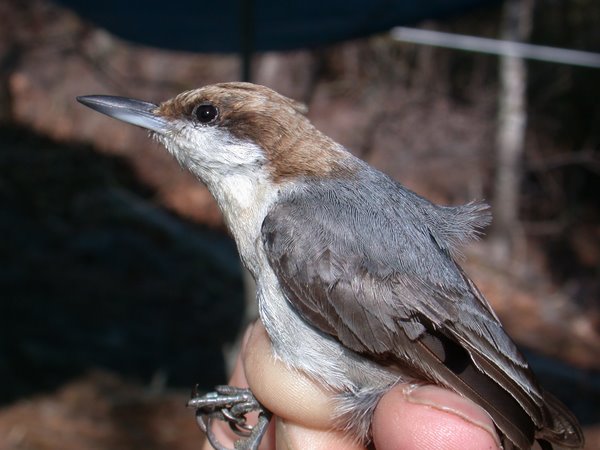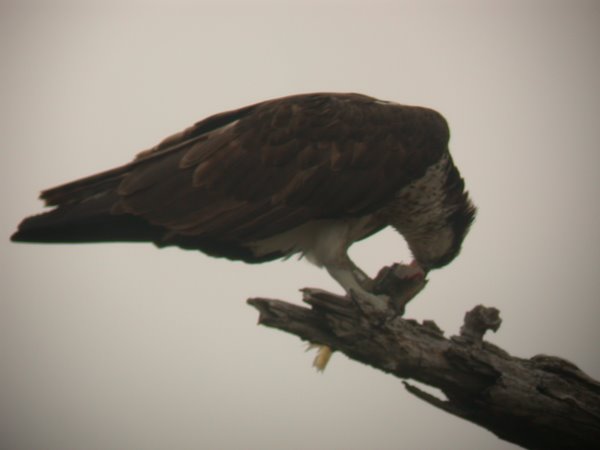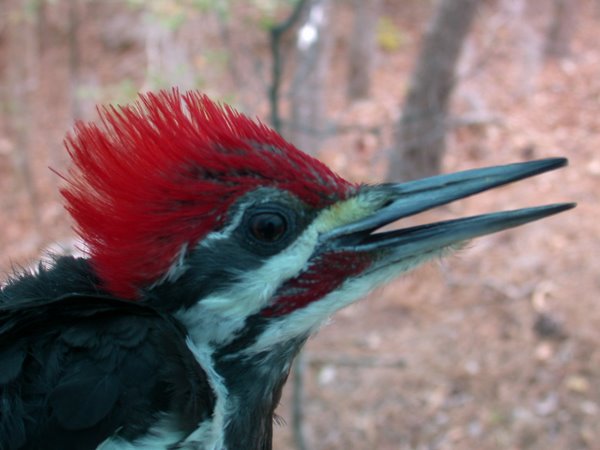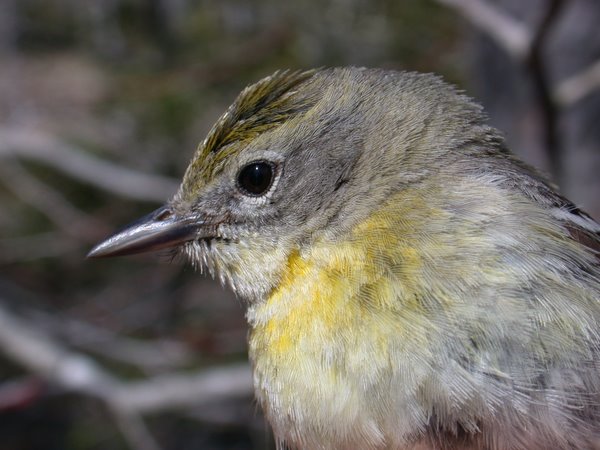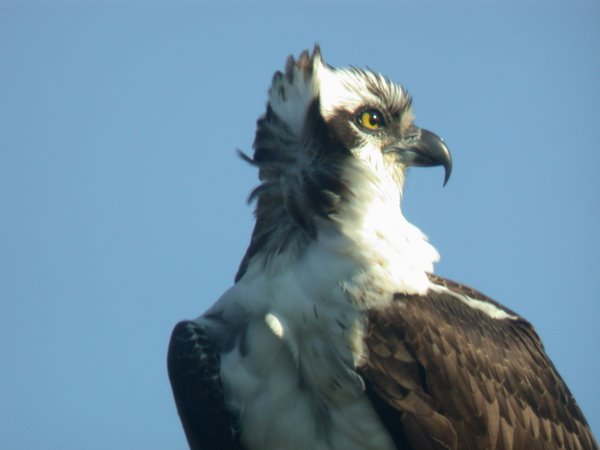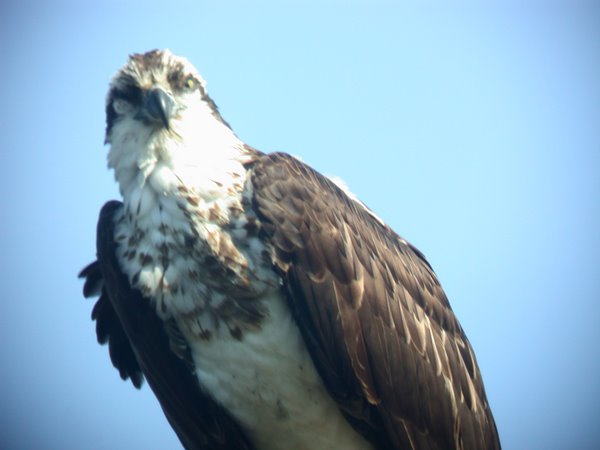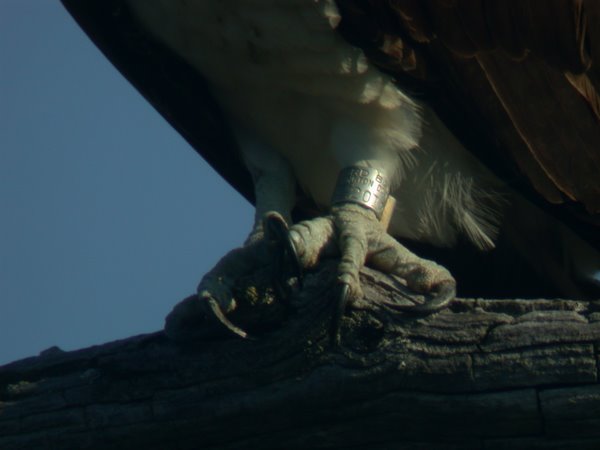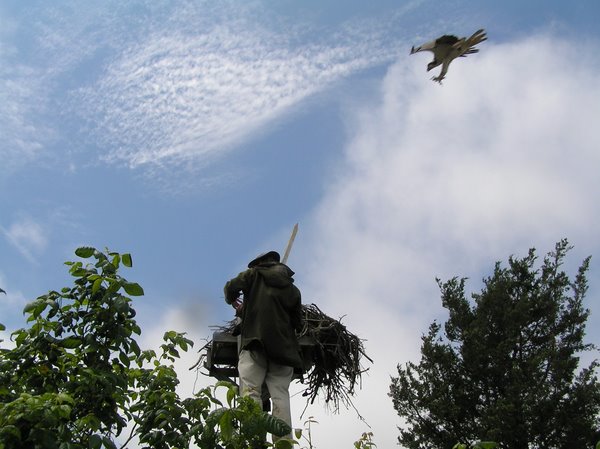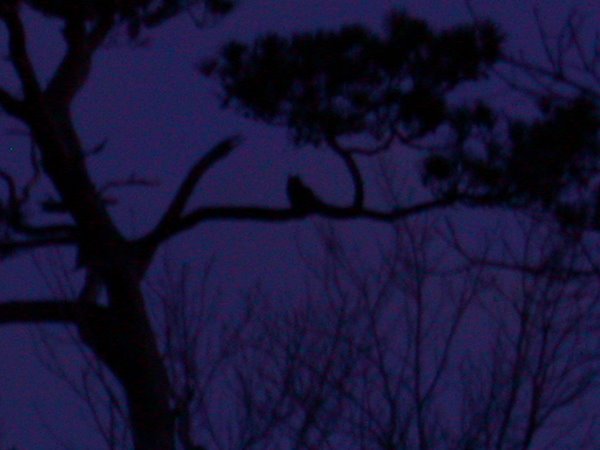



On Saturday, February 26, 2011, old and new friends gathered for the eighth time to set up the CVWO spring banding station at First Landing State Park. Under the direction of Bob Reilly, the nets were set in place at the station. Using the many talents of Robert Klages, the fabric structure covering the banding table was assembled with the customary difficulties. This is my fifth spring.
Terry Jenkins and I fine-tuned the aerial nets and rearranged the boards at the treacherous mud nets over the next two days. And after waiting for some temperate weather, I opened the nets for the first time on March 4th at 1000. Why so late in the morning?
In past years the first banding day has netted good numbers of birds. Temperatures around freezing and many birds in the nets at once are not a good match. So I waited for a day when the sun was up and the temperatures exceeded 40F on a bright day with little wind. Such was March 4th.
On the 1400 net run a fond acquaintance appeared in net A3; the Fox Sparrow pictured. Banded at First Landing on March 10, 2010, the bird was a picture of health and prepared for its long migration north to Canada after another comfortable winter at First Landing. Another winter resident, a male Myrtle Warbler from March 17, 2008 also found the nets. Other old mates captured during the first few days were local, year-around residents, two Carolina Chickadees (2009 and 2010) and a Carolina Wren (2010).
Fidelity of many bird species to the same nesting areas is well established. The fidelity of many bird species to the same wintering areas is less well known. Over the seven seasons of the First Landing station, winter residents such as Fox Sparrows, Hermit Thrushes, Myrtle Warblers, Swamp Sparrows and Ruby-crowned Kinglets have demonstrated their affection for the Park habitat by returning annually.
Finally, Eastern Bluebirds have done well in the Park in recent years. The male pictured earned a band on opening day. And not to be left out, a female Common Yellowthroat appeared from out of the marsh-the earliest of her species yet banded at the station. There will be many more Yellowthroats to come.









































